Myth of History
Regimental Steins
Formerly a souvenir of the soldiers’ service, today valuable collector’s items for lovers of historical art.
Formerly a souvenir of the soldiers’ service, today valuable collector’s items for lovers of historical art.
Victory over France in the Franco-Prussian War of 1870/71 brought with it an unexpected economic boom for the newly founded “German Empire”.
Alsace-Lorraine was once again part of the German Empire. France’s reparations helped the German Empire became the largest domestic economy in the world. The Imperial German soldiers from 1871 to 1918 were proud to serve the emperor, the empire and the people.
All / Kolonial China / Marine / Flieger / Versuchskompanien / Kraftfahrzeugeinheiten / Luftschiffer / Pioniere / Telegraphen / Maschinengewehreinheiten / Jäger / Train / Kavallerie / Artillerie / Infanterie / Others
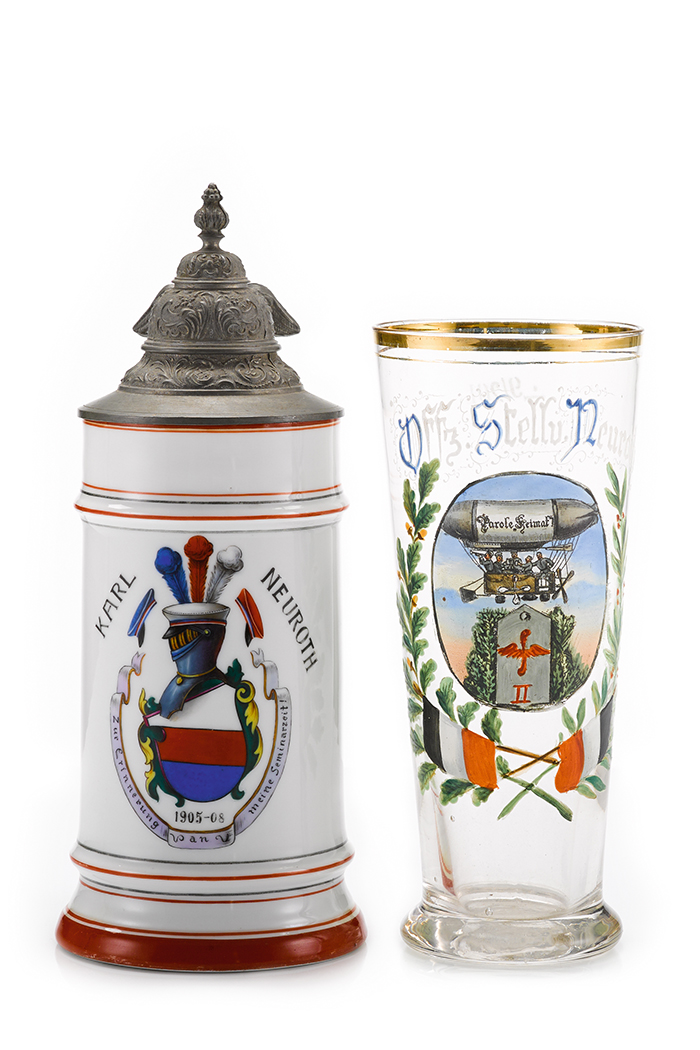
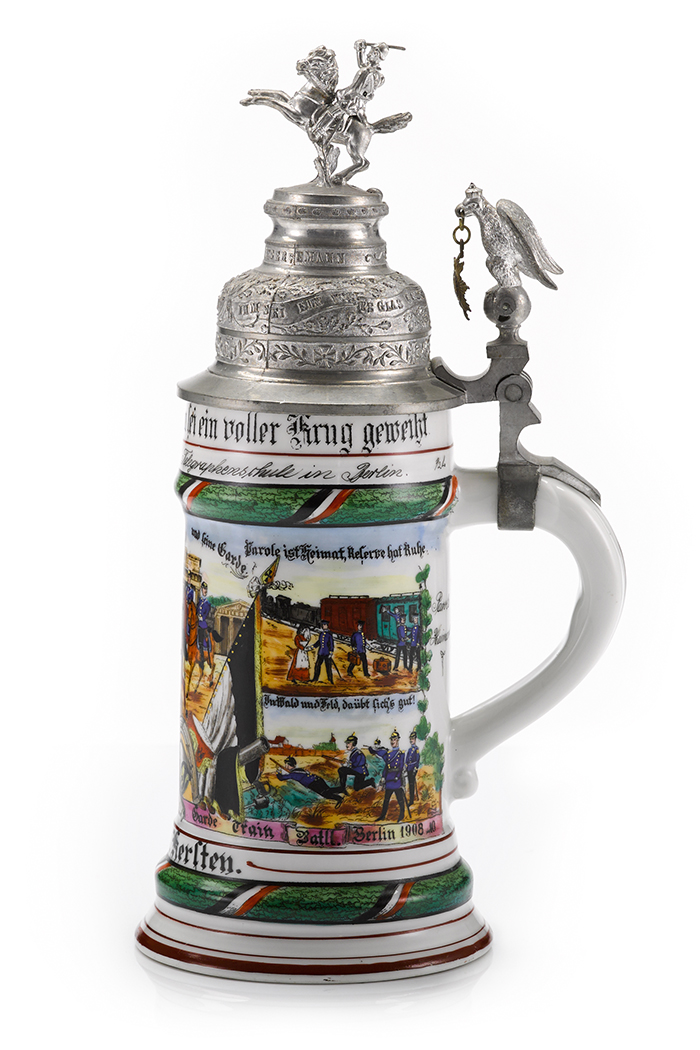
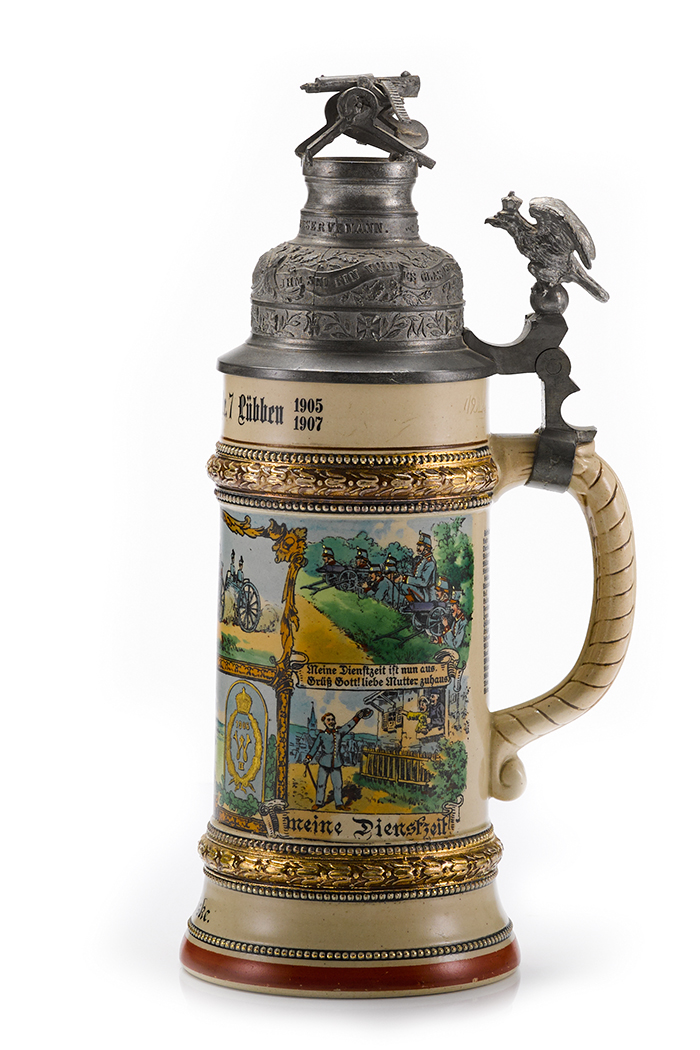
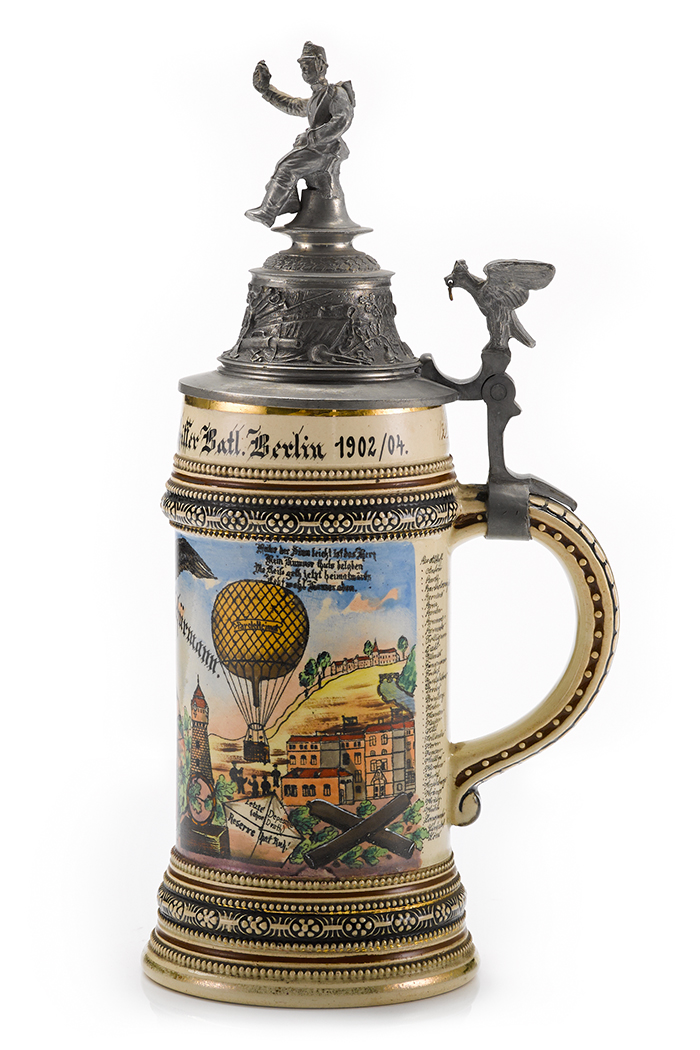
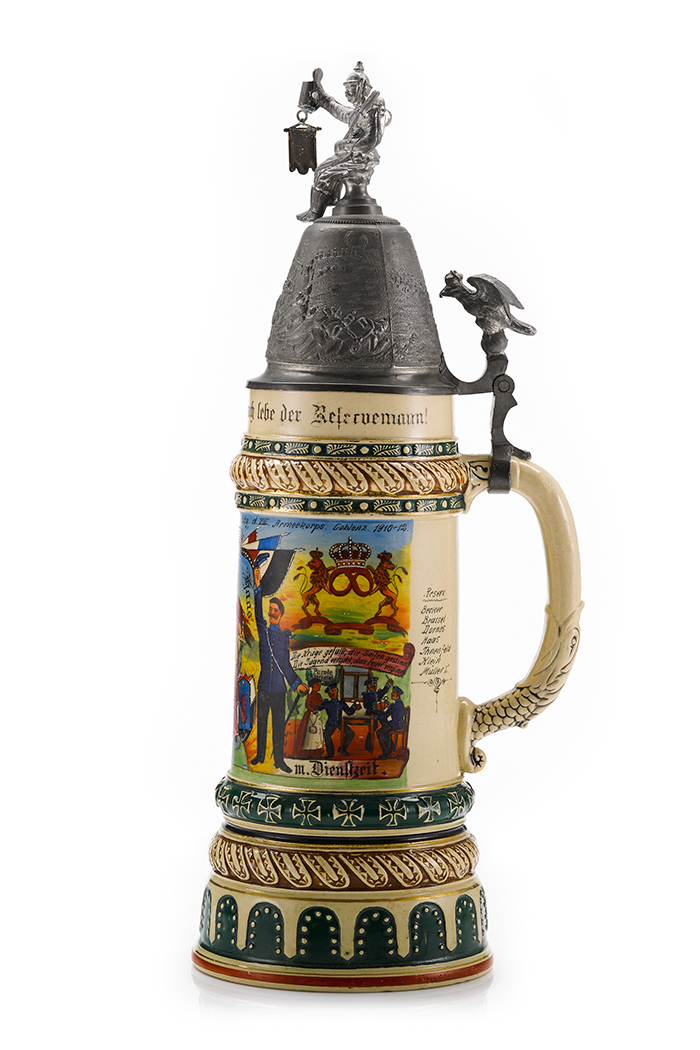
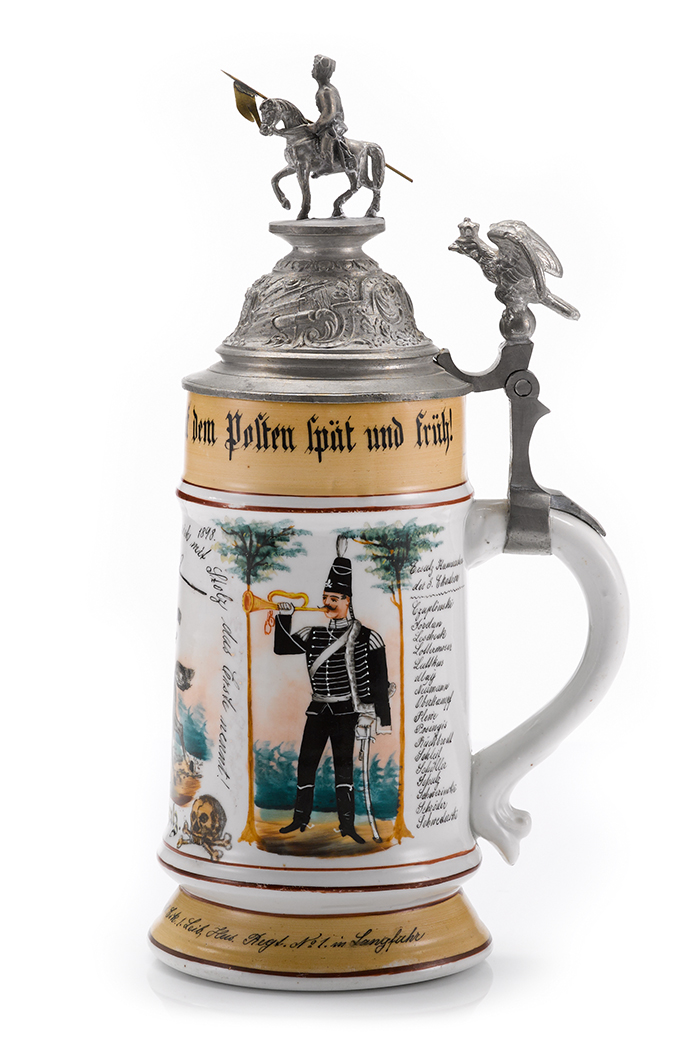
The lid figure on the tin lid usually indicates the branch of service: artillery, cavalry, navy or machine gun division. The screw-on lids, some of which even have two threads, are particularly highly sought-after among collectors.
The thumblift is often decorated with the Prussian eagle, the Baden griffin, the Bavarian or Hessian lion, the coat of arms of Württemberg or Saxony and many other versions such as a kneeling soldier taking aim.
The bodies of the steins are often decorated with scenes from the soldiers’ day-to-day lives as well as views of the barracks or towns. Bivouac scenes, guard duties with sentry boxes, battle scenes, patrols, etc., are also common themes. In addition, the steins also often feature sayings associated with the life of a soldier, the reserve and the garrison or special events.